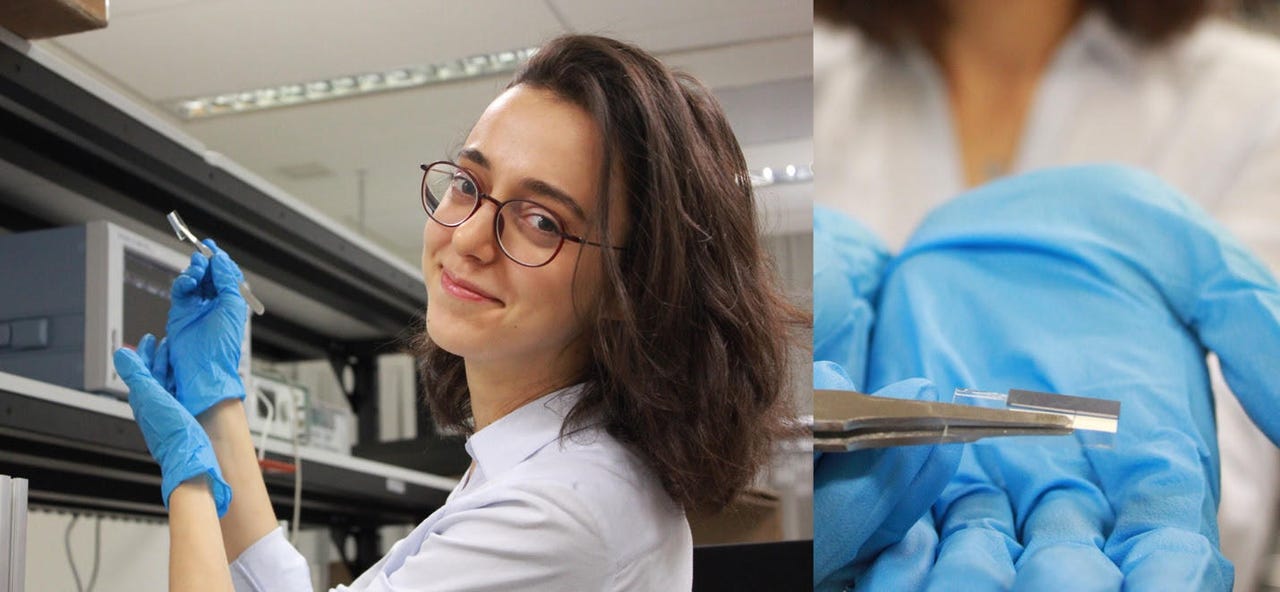Sydney-Singapore team manipulate light wave on a silicon chip


Lead author and PhD student Ezgi Sahin with one of the experimental chips
The University of Sydney (USyd) has announced that a team comprised of researchers and students from the university's Nano Institute and Singapore University of Technology and Design (SUTD) has successfully manipulated a light wave -- or photonic information -- on a silicon chip.
The breakthrough sees the silicon chip retain its overall "shape", which is important USyd said, in the transfer of information via optic fibre that spans continents and oceans.
Such waves -- whether a tsunami or a photonic packet of information -- are known as "solitons", and according to the universities, the team observed soliton dynamics on an ultra-silicon-rich nitride (USRN) device fabricated in Singapore using optical characterisation tools at Sydney Nano.
The Sydney-Singapore team claim the foundational work is important because most communications infrastructure still relies on silicon-based devices for propagation and reception of information.
"Manipulating solitons on-chip could potentially allow for the speed up of photonic communications devices and infrastructure," USyd said.
"The observation of complex soliton dynamics paves the way to a wide range of applications, beyond pulse compression, for on-chip optical signal processing," added Ezgi Sahin, a USyd PhD student at SUTD, who conducted the experiments with USyd's Dr Andrea Blanco Redondo.
According to the universities, retaining information in an optic fibre is vital, but it ideally requires the manipulation of light in silicon chips at the source and reception end of the fibre without altering the wave shape of the photonic packet of information.
"Solitons of this nature -- so-called Bragg solitons -- were first observed about 20 years ago in optical fibres but have not been reported on a chip because the standard silicon material upon which chips are based constrains the propagation. This demonstration, which is based on a slightly modified version of silicon that avoids these constraints, opens the field for an entirely new paradigm for manipulating light on a chip," co-author of the study and Director of Sydney Nano Professor Ben Eggleton explained.
The universities said they were able to convincingly demonstrate Bragg soliton formation and fission because of the unique Bragg grating design and the ultra-silicon-rich nitride material platform they used. SUTD co-author Professor Dawn Tan said the platform prevents loss of information which has compromised previous demonstrations.
The silicon-based nature of the Bragg grating device also ensures compatibility with complementary metal oxide semiconductor processing, with USyd saying the ability to reliably initiate soliton compression and fission allows ultrafast phenomena to be generated with longer pulses than previously required.
The chip-scale miniaturisation also advances the speed of optical signal processes in applications necessitating compactness, it added.
Bragg solitons are named after Australian-born Lawrence Bragg and his father William Henry Bragg, who first discussed the concept of Bragg reflection in 1913 and went on to win the Nobel Prize in Physics.
"Optical soliton waves have been studied since the 1980s in optical fibres and offer enormous promise for optical communication systems because they allow data to be sent over long distances without distortion," the university explained.
"Bragg solitons, which derive their properties from Bragg gratings -- periodic structures etched in to the silicon substrate -- can be studied at the scale of chip technology where they can be harnessed for advanced signal processing."
RELATED COVERAGE
- RMIT touts faster internet thanks to 'twisted light'
- Researchers break speed record for transmitting data using light bulbs (TechRepublic)
- Australian National University invention brings sci-fi holograms a step closer
- UNSW and Sydney Uni quantum partnership already bearing fruit
- University of Sydney develops quantum trick to block background sensor 'chatter'
- Microsoft and USyd claim invention of key quantum computing component
- Sydney Uni predicts the unpredictable in quantum computing advancement
- ANU successfully measures light for quantum internet data transfer